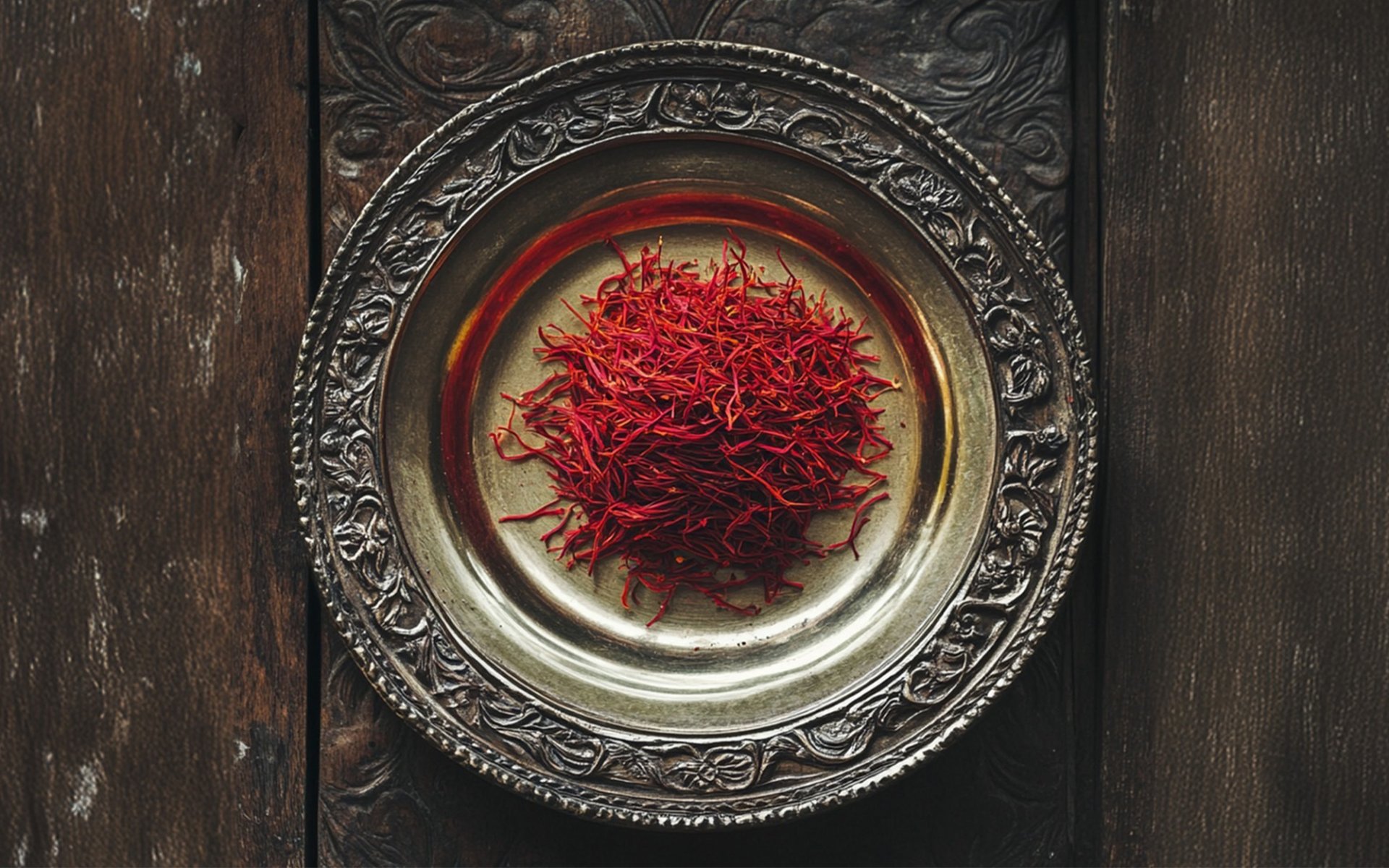Saffron

In the world of spices and herbs, few evoke as much intrigue as Saffron, the precious crimson threads derived from the Saffron Crocus flower. Hailed as the world's most expensive spice, with prices reaching nearly 100,000 Baht per kilogram, many wonder what lies behind its exorbitant cost. Today, Rimping Supermarket invites you to delve into the origins, benefits, and reasons why Saffron truly deserves its title: "The Gold of Spices."
Why is Saffron the World's Most Expensive Spice?
Saffron's incredibly high price stems from a combination of complex factors, spanning from cultivation to harvest:
- Specific Climate Requirements: Saffron thrives only in certain regions of the world, demanding specific climatic conditions and ample daily sunlight. This restricts its cultivation to limited environments.
Meager Yields: Each Saffron Crocus flower produces only three delicate crimson stigmas, which are the actual "Saffron" we consume. Consequently, to yield just one pound (approximately 0.45 kilograms) of dried Saffron, a staggering 50,000 to 75,000 Saffron flowers are required! - Labor-Intensive Harvesting Process: The harvesting of Saffron must be done quickly and meticulously, as the stigmas need to be picked by hand within a single day before the flowers wilt. Immediately after harvesting, the stigmas must be carefully toasted and dried. This entire process requires a large amount of manual labor and cannot be automated by machinery, leading to high production costs.
These factors collectively contribute to Saffron's rarity and exceptional value.
Leading Saffron Exporting Countries
Geographic and climatic conditions play a crucial role in determining the quality and quantity of Saffron production. As such, Saffron cultivated in different regions may possess slightly varying characteristics and properties.
The primary countries that cultivate Saffron for export include Spain, Germany, France, India, and Iran. Notably, Iran stands out as the leading producer of Saffron, renowned for its superior quality and the largest production volume globally, making it the most significant source of Saffron in the international market.
Benefits and Properties of Saffron
Saffron offers more than just an exquisite aroma and high price tag; it is also rich in nutritional value and diverse medicinal properties. This has led to its extensive use in various cultures throughout history:
- Enhances Flavor and Color in Cuisine: Saffron possesses a unique, strong aroma and imparts a beautiful golden-yellow hue, making it a popular spice for flavoring and coloring a wide range of dishes, such as Risotto or Spanish Paella.
- Supports Body and Health: Saffron is often associated with benefits such as helping to reduce cholesterol levels in the blood, alleviating bloating and indigestion, promoting appetite, nourishing the skin, and extending longevity.
- Used in Fragrances and Textiles: Due to its long-lasting fragrance and beautiful color, Saffron has historically been used as an ingredient in perfumes, incense, and even as a dye for royal garments in many ancient cultures.
Furthermore, Saffron has a long history of use in traditional medicine. In 16th-century Chinese traditional medicine texts, Saffron was referred to as "Xi Hong Hua" (西红花), meaning "red flower from the West."
Modern medical studies have also uncovered additional benefits of Saffron
- May Alleviate Depression: A 1995 study indicated that Saffron stigmas and petals may be beneficial in treating depression, offering a natural alternative.
- Supports Eye Health: Regular daily consumption of Saffron can help preserve eyesight as one ages, maintaining ocular cell function and resilience against diseases. Saffron also acts as a powerful antioxidant, protecting eye cells from damage, shielding the eyes from sunlight, and potentially preventing age-related macular degeneration, a leading cause of vision loss in older adults.
Proper Storage Methods for Saffron
Given Saffron's volatile properties, especially in powdered or shredded form, proper storage is crucial to preserve its quality and benefits:
- Avoid Sunlight and Moisture: Always store Saffron away from direct sunlight and moisture. These factors can degrade Saffron and cause it to lose its aroma and properties.
- Airtight Containers: Keep Saffron in an airtight glass jar or metal container. This prevents air and moisture from interacting with the Saffron, thereby preserving its flavor and medicinal properties for longer.
- Do Not Grind Before Use: It is best to store Saffron as whole threads and only grind it into powder just before use. This helps to maintain its maximum aroma and efficacy.
Following these guidelines will help ensure your valuable Saffron remains high quality and ready for use whenever you need it.


